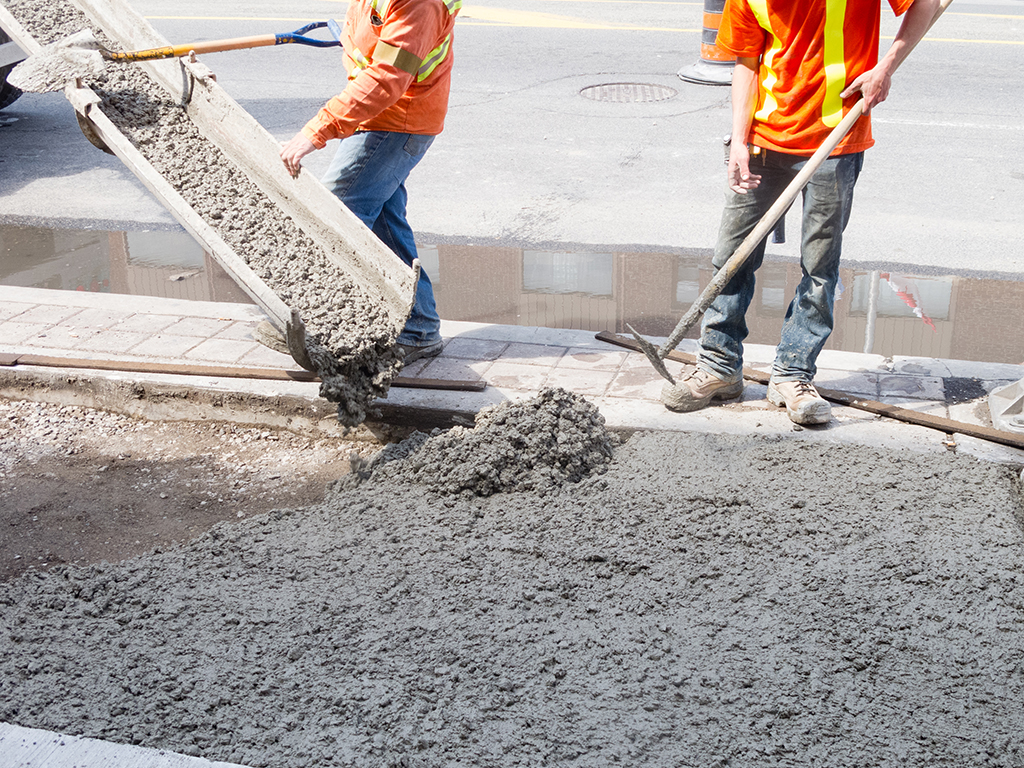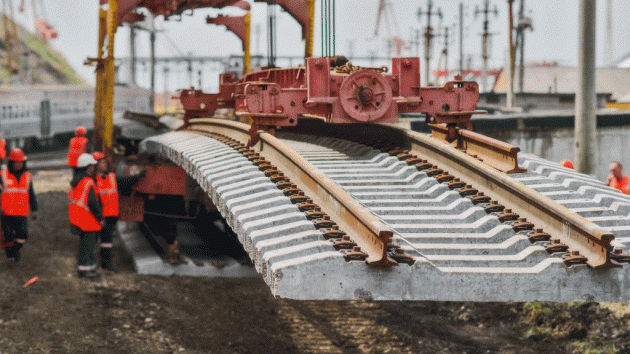Researchers develop self-reproducing building material – Living concrete is green and can be used on Mars

Minerals in the new material are deposited not by chemistry but by cyanobacteria, a common class of microbes that capture energy through photosynthesis. The photosynthetic process absorbs carbon dioxide, in stark contrast to the production of regular concrete, which spews huge amounts of that greenhouse gas.
Photosynthetic bacteria also give the concrete another unusual feature – a green color, which made scientists call it “a Frankenstein material.” However, the green color fades as the material dries, The New York Times adds.
To build the living concrete, the researchers first tried putting cyanobacteria in a mixture of warm water, sand and nutrients. The microbes eagerly absorbed light and began producing calcium carbonate, gradually cementing the sand particles together. But the process was slow.
One team member had previously worked with gelatin, a food ingredient that, when dissolved in water and cooled, forms special bonds between its molecules. Importantly, it can be used at moderate temperatures that are gentle on bacteria. He suggested adding gelatin to strengthen the matrix being built by the cyanobacteria, and the team was intrigued. The researchers bought Knox brand gelatin at a local supermarket and dissolved it in the solution with the bacteria. When they poured the mixture into molds and cooled it in a refrigerator, the gelatin formed its bonds. The gelatin provided more structure, and worked with the bacteria to help the living concrete grow stronger and faster.
After about a day, the mixture formed concrete blocks in the shape of whatever molds the group used, including two-inch cubes, shoe box-size blocks and truss pieces with struts and cutouts. Individual two-inch cubes were strong enough for a person to stand on, although the material is weak compared to most conventional concretes. Blocks about the size of a shoe box showed potential for doing real construction.
Stored in relatively dry air at room temperature, the blocks reach their maximum strength over the course of days, and the bacteria gradually begin to die out. But even after a few weeks, the blocks are still alive; when again exposed to high temperature and humidity, many of the bacterial cells perk back up.
The group can take one block, cut it with a diamond-tipped saw, place half back in a warm beaker with more raw materials, pour it in a mold, and begin concrete formation anew. Each block could thus spawn three new generations, yielding eight descendant blocks.
The New York Times further adds that the U.S. Department of Defense is interested in using the reproductive ability of these “L.B.M.s” — living building materials — to aid construction in remote or austere environments.
The blocks also have the advantage of being made from a variety of common materials. Most concrete requires virgin sand that comes from rivers, lakes and oceans, which is running short worldwide, largely because of the enormous demand for concrete.
For construction on Mars
According to Dr. Srubar from the team, living concrete might help in environments harsher than even the driest deserts: other planets, like Mars. He adds that “there’s no way we’re going to carry building materials to space” and that “we’ll bring biology with us” instead.
Most Important News
06.04.2024. | Agriculture
Preconditions for Placement of Fresh Blueberries and Dried Plums in Chinese Market Secured

16.04.2024. | News
Jovan Ciric, Leasing Director Retail MPC Properties – MPC Echo symbolizes our desire for good ideas and innovative endeavors to spread freely and bring about positive changes

16.04.2024. | News
10.04.2024. | Finance, IT, Telecommunications, Tourism, Sports, Culture
Creative Industry – What This Serbian Economy Sector Worth EUR 2 Billion Encompasses

10.04.2024. | Finance, IT, Telecommunications, Tourism, Sports, Culture
24.04.2024. | Construction, Healthcare
Price of construction of Tirsova 2 increases to EUR 141.6 million – Contract awarded to consortium of 10 companies

24.04.2024. | Construction, Healthcare
16.04.2024. | News
Economy Fair in Mostar opens – 26 companies from Serbia exhibiting

16.04.2024. | News
24.04.2024. | Construction, Transport
Dates of publishing of tenders for construction of three sections of fast railroad from Belgrade to Nis known

24.04.2024. | Construction, Transport


 Izdanje Srbija
Izdanje Srbija Serbische Ausgabe
Serbische Ausgabe Izdanje BiH
Izdanje BiH Izdanje Crna Gora
Izdanje Crna Gora


 News
News







